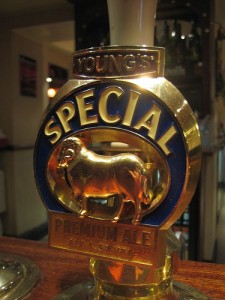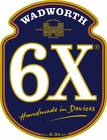Hops
 Thought it was time for the next installment in our ingredients deep dive. So far we have covered water and the mighty yeast so I thought it was time to take a deeper dive into one of the more complex and underrated of all the ingredients in ale, hops. I say underrated because hops do more than just provide the bitter flavour to balance out the sweet malt. Hops also contribute to the aroma and arguably more important have anti-bacterial properties that favor brewers yeast over bacterias keeping beers fresh and allowing a hopped ale to age without spoiling.
Thought it was time for the next installment in our ingredients deep dive. So far we have covered water and the mighty yeast so I thought it was time to take a deeper dive into one of the more complex and underrated of all the ingredients in ale, hops. I say underrated because hops do more than just provide the bitter flavour to balance out the sweet malt. Hops also contribute to the aroma and arguably more important have anti-bacterial properties that favor brewers yeast over bacterias keeping beers fresh and allowing a hopped ale to age without spoiling.
I have often wondered how hops came to be used in beer. I have to admit they are not an obvious choice. Fermentation of fruit and grains has been an activity well documented in history going back into ancient times and I am sure much experimentation was done to improve flavour and longevity, especially given the quality of water and food was not a guarantee. We take for granted today our near universal access to clean drinking water in the modern western world, something that was not a given for brewers of old.
So I went online and through my history of brewing books and found all kinds of explanations as to how hops came to be used. In the end I came back to an old faithful (though I don’t think the author, Martyn Cornell, would not appreciate the old bit), my favorite beer history blog, Zythophile. In a post dated Nov 20th 2009 titled “A short history on hops” Mr Cornell provides a well researched and thorough piece on the hop and its rich history. I will not try to re-write the piece, I could never do it justice and I would probably make a mistake, something Mr Cornell would get very upset with. He is not only a famous beer historian but a beer myth buster also and not afraid to speak out against inaccurate and lazy research. The one paragraph that leapt out of the page (or browser) was the following”
Book I, Chapter 61, “De Hoppho”, or “Concerning the hop”, says of the plant: “It is warm and dry, and has a moderate moisture, and is not very useful in benefiting man, because it makes melancholy grow in man and makes the soul of man sad, and weighs down his inner organs. But yet as a result of its own bitterness it keeps some putrefactions from drinks, to which it may be added, so that they may last so much longer.” (Abbess Hildegard of Bingen (1098-1179), mystical philosopher and healer, published a book called Physica Sacra, which translates best as “The Natural World” (circa 1150).
The author then goes on to note:
What probably kept the usefulness of hops from being discovered for so long is that the bittering, preserving resins in hop cones are not very soluble, and the hops need boiling for a long time, around 90 minutes, for what is called isomerisation
Please read the rest but the above brings us to the most important discussion around hops and brewing, how they work. Male and female flowers form on separate hop plants. The hops used for brewing are the female flower cluster, which contains many small flowers. Female hop flowers, also called cones, are harvested in August-September and dried. The female cones are important because they contain lupulin glands that contain alpha and beta resins and other essential oils used to impart specific aroma and flavour characteristics. Alpha and beta resins are measured as the % weight of the hop cone and displayed on the packaging as alpha acids and beta acids.
ALPHA ACIDS – contain the chemical agents Humulone, Cohumulone and Adhumulone and are used to impart bitterness, the higher the alpha % the more bitter the hop. Alpha resins are not very soluble and require at least 60 mins boiling to extract the bitterness.
BETA ACIDS – Beta resins and hop oils are used to impart flavour and aroma. Unlike the alpha acids these oils are water soluble and will quickly boil off in the kettle so cannot be in the pot for too long. A hop will impart flavour if boiled between 5-15 mins and aroma if boiled for 1-3 mins.
An important note to brew calculator users. The hop alpha and beta % used by these applications are averages for a particular variety. The actual resin % does vary year to year and even crop to crop from the same region. It is important to note the published %’s on a package prior to use and recalculate your recipe hop levels to ensure you maintain the appropriate bitterness and flavour characteristics.
A well designed and useful bitterness and flavour hop reference chart can be found here with another great reference on creating flavours found here. This chart and others like it can assist us when it comes to decide the type of hops we should use and the quantities and timing during the boil to attain the flavour and aroma characteristics for our final brew. Experimenting with flavour is an art and something every homebrewer should have fun with. For example if I were to use the above chart to brew a great spicy, citrus American IPA consider the Williamette as your flavour and aroma hop.
While flavour and aroma are part of the art of homebrew, bitterness is more the science. Bitterness is measured in most calculators and modern recipes in International Bittering Units (IBU’s). There is debate as to the most accurate IBU formula for small batch homebrews but it appears that most books and online resources use the Tinseth formula created by hop head Glen Tinseth. Measured in parts per million (ppm), if you do not have access to a brewing calculator or just enjoy doing the brew math by hand here is the Tinseth formula for estimating a brews IBU:
IBU = Utilization * ( oz of hops * ( Alpha Acid% / 100 ) * 7490 ) / Gallons of Wort
Utilization refers to how much of the alpha acid is actually used and is dependent primarily on the boil time, but is also affected by specific gravity of the wort and whether the hops used are pellets or whole hops. I will not use this post to get into a discussion on the use of pellets over whole leaf except to say I use pellets. In my experience they are easier to store and stay fresh longer. Typical utilization %’s are in the range of 15 to 25% depending on the length of the boil. Pelletized hops have about 10% more bittering potential than whole hops because the soft resins have been upset and made more available during the pelletizing process. To calculate utilization using the Tinseth formula use the following (for pellet hops add 10% to the final value).
Utilization = ( 1.65 * 0.000125^( OG of the wort – 1 ) ) * ( ( 1 – 2.72^( -0.04 * Hop Boil Time ) ) / 4.14 )
Taking the Theakston Old Peculier brew I researched last week as an example with an IBU target of 29 and the research indicating the use of Fuggle hops. The Fuggle pellets I have in stock have a stated alpha of 4.5% so using the formula above, the alpha %, the batch size and target OG for the brew of 1.060 I would calculate the following:
Step 1 – calculate utilization for both the 60 mins and 15 min additi0ns (adding an additional 10% for pellets)
60 min: ( 1.65 * 0.000125^( 1.060 – 1 ) ) * ( ( 1 – 2.72^( -0.04 * 60 ) ) / 4.14 ) = 21.14% (whole hops) or 23.25% (pellet hops)
15 min: ( 1.65 * 0.000125^( 1.060 – 1 ) ) * ( ( 1 – 2.72^( -0.04 * 15 ) ) / 4.14 ) = 10.5% (whole hops) or 11.5% (pellet hops)
Step 2 – calculate the IBU for the final brew, you may need to
play around with the hop quantities to get the final IBU right. Remember that higher quantities of later addition hops lead to a more intense the flavour and aroma without adding to the bitterness.
60 min: 23.25 * ( 0.67 * ( 4.5 / 100 ) * 7490 ) / 2.5 = 21
15 min: 11.5 * ( 0.53 * ( 4.5 / 100 ) * 7490 ) / 2.5 = 8.25
IBU = 29.25 (21 + 8.25)
Hope this has helped. I have included a basic excel spreadsheet with the above example. Have fun, remember to always check the alpha % and adjust your recipe accordingly, research recipes from your favorite brews to see the types of hops used and investigate the websites of your favorite commercial brews as they often post the hops they use and associated tasting notes. Next up the Malt and yes there will be more math.




